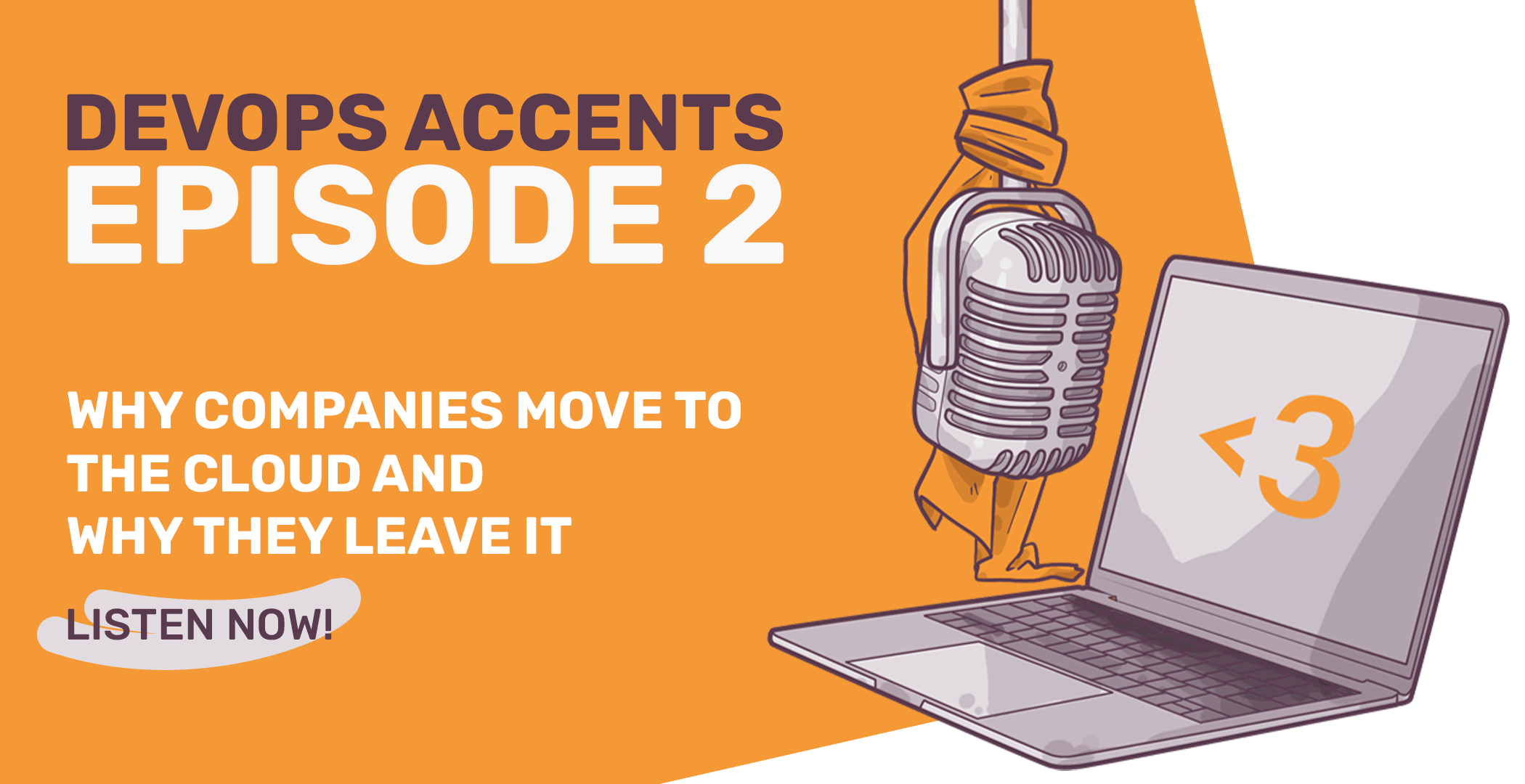Why Companies Move to the Cloud, Why They Leave It and Everything in Between |🎙️#2


In this episode of the DevOps Accents, Leo, Pablo and Kirill are going to talk about what the cloud is all about:
- Why do companies move to the cloud and do they leave the cloud;
- The many options between running your own DC and using one of the main cloud providers;
- The choice between using the cloud right, or avoiding the vendor lock-in and paying enormous bills;
- And many other related topics!
Apologies for the sound quality: Pablo and Kirill had to record outside due to travelling, not too far away from the construction works, plus Kirill didn't manage to properly set up his microphone. Thanks to our editor Mila Jones for making a miracle and editing the sound in a way that it's still possible to enjoy it!
You can listen to episode 2 of DevOps Accents on Spotify, or right now:
In the evolving landscape of technology, the debate between utilizing cloud infrastructures versus on-premises solutions remains at the forefront. This discussion, characterized by insights from tech experts Pablo, Leo, and Kirill, sheds light on the nuances, offering a perspective that's both comprehensive and accessible to a broad audience.
Understanding Cloud vs. On-Premises Infrastructure
The conversation begins with a foundational question: What differentiates cloud infrastructure from on-premises setups? At its core, both involve applications running on physical servers. However, the distinction lies in the ownership and management of these servers. On-premises infrastructure is directly controlled by the company, offering complete management over the physical hardware. In contrast, cloud infrastructure, provided by giants like Amazon and Google, brings a suite of cloud-native services and advanced capabilities beyond mere compute power, including databases, object storage, and more, shifting the management burden away from companies to these providers.
The Cloud Management Paradox
A key insight from the discussion is the management paradox of cloud computing. As companies dive deeper into the cloud, they relinquish control over their infrastructure to cloud providers. This trade-off simplifies operations but at a cost: the loss of direct control over where and how applications run. This shift raises questions about the balance between ease of use and the need for control, highlighting that cloud adoption is not a one-size-fits-all solution but rather depends on the specific needs and priorities of each company.
Economic Considerations in Cloud Adoption
Economics play a pivotal role in the decision to migrate to or from the cloud. The dialogue points out that while cloud services offer scalability and flexibility, they often come at a premium. The notion that "the cloud will always be significantly more expensive" if used merely for running servers underscores the importance of understanding the full cost implications of cloud services, including the myriad of fees for data transfer, storage, and other services that can make cloud costs unpredictable and potentially higher than on-premises solutions.
The Case for Leaving the Cloud
The concept of leaving the cloud, spurred by companies like Dropbox and Basecamp, introduces a critical examination of the reasons behind such moves. Primarily driven by economic factors, the discussion reveals that for some, especially tech giants, moving away from the cloud to on-premises or managed data centers can result in significant cost savings. However, this is not a viable path for all companies, particularly smaller ones that may not have the scale or resources to justify such a transition.
The Future of Cloud Computing: Standards and Innovation
Looking ahead, the conversation touches upon the potential for standardization in cloud computing, akin to the adoption of containerization and Kubernetes. These standards could democratize access to cloud-like capabilities, enabling companies to run applications more uniformly across different environments. Yet, the discussion also cautions against the stifling of innovation that could come from overly rigid standards, suggesting that the future of cloud computing will likely be shaped by a balance between standardization for ease of use and flexibility for innovation.
Conclusion: A Balanced Approach to Cloud Adoption
In conclusion, the debate between cloud and on-premises infrastructures is not about choosing one over the other but finding the right balance that aligns with a company's specific needs, priorities, and financial considerations. As the cloud computing landscape continues to evolve, companies must navigate these decisions carefully, considering not only the immediate benefits of cloud services but also the long-term implications on control, costs, and the ability to innovate.
Podcast editing: Mila Jones, milajonesproduction@gmail.com
